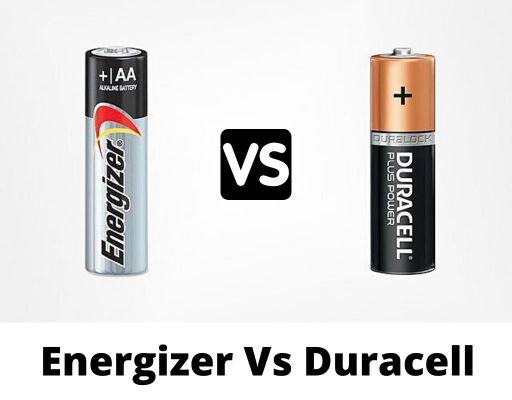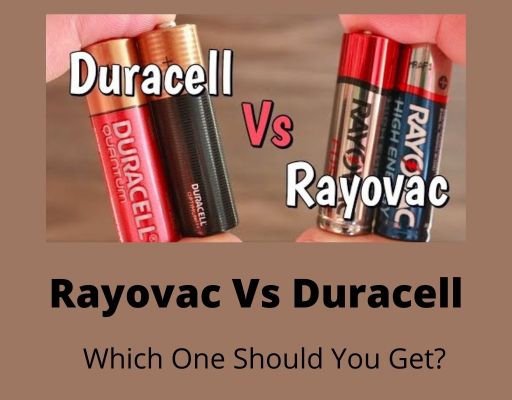Primary cells having a high energy-to-weight ratio are Silver Oxide batteries. Its energy capacity is roughly twice that of button-type alkaline batteries. Even though the name Silver Oxide may be unfamiliar, it is a commonly used battery.
Silver oxide batteries have a flatter discharge curve than alkaline batteries. In addition, silver oxide batteries are not flammable and do not experience thermal runaway.
I’ll go over all you need to know about the differences between silver oxide and alkaline batteries in this article. Thus, take a deep breath and read the entire article.
What Is Silver Oxide Battery?
A primary cell with silver oxide as the cathode and zinc as the anode is known as a silver-oxide battery (IEC code: S).
During discharge, these cells retain a fairly constant nominal voltage until they are completely depleted.
They come in small button cell sizes, where the amount of silver needed is modest and not an unreasonable expensive component of the entire product cost.
Because of their excellent energy-to-weight ratio, silver-oxide batteries were utilized for the lunar module and lunar rover power supplies for Apollo program lunar missions.
Benefits of Silver Oxide Battery
- The operational voltage of silver oxide batteries is greater.
- Silver oxide batteries have a flatter discharge curve than alkaline batteries.
- The run time of silver oxide batteries is longer.
- The positive electrode is silver oxide, whereas the negative electrode is zinc.
Silver Oxide Batteries Size
A silver oxide battery, sometimes known as a button cell, is a compact single-cell battery that is fashioned like a squat cylinder with a diameter of 5 to 25 mm (0.197 to 0.984 in) and a height of 1 to 6 mm (0.039 to 0.236 in), similar to a button.
Silver Oxide Battery by Chemical
Because the electrolytes used in silver oxide batteries are essentially identical to those used in AMBs, the positive electrode mix generation technique is similar to that of AMBs.
Silver monoxide is a positive-active substance, but its electric conductivity is minimal, necessitating the use of conductive material. The ideal candidate is highly pure graphite powder.
In most cases, 3–7% graphite powder is combined with the active ingredient.
If a reductive impurity is present in the conductive additive, it reduces the positive-active material during storage, resulting in capacity loss as well as the generation of carbon dioxide.
The electrolyte is consumed by carbon dioxide, causing the battery to degrade. As a result, graphite purity is extremely crucial.
What Is Alkaline Battery?
An alkaline battery (IEC code: L) is a type of primary battery that gets its energy from zinc metal and manganese dioxide reacting together.
The alkaline battery is named after the alkaline potassium hydroxide (KOH) electrolyte, which replaces the acidic ammonium chloride (NH4Cl) or zinc chloride (ZnCl2) electrolyte used in zinc-carbon batteries.
Other battery systems use alkaline electrolytes as well, but the electrodes are made of different active materials.
Benefits of Alkaline Battery
- Long battery life combined with a long shelf life
- It’s completely safe to handle and use
- It has a high energy density
- The ability to work in a variety of temperatures
What Are the Differences Between Silver Oxide and Alkaline Batteries?
There are several key differences between Silver Oxide Battery and Alkaline Battery. Time to take a look.
Silver Oxide Battery Vs Alkaline Battery
| Features | Silver Oxide Battery | Alkaline Battery |
| Appearance | Comparatively smaller. | Larger in size |
| Size | 5.8 mm x 1.6 mm | 11.6 mm x 5.4 mm |
| Capacity | Up to 150 mAh | Up to 3000 mAh |
| Supported devices | Watches, calculators, photoelectric exposure devices, hearing aids, and electronic instruments can all benefit from it. | Many home items, such as MP3 players, CD players, digital cameras, toys, torches, and radios, use alkaline batteries. |
| Cost | Costs more than an Alkaline Battery due to its capacity | Costs less |
Key Factors to Consider Before Choosing Between Silver Oxide Battery and Alkaline Battery
This is dependent on your application and the availability of the Alkaline version. Silver Oxide watch batteries come in a significantly larger range of sizes.
In truth, Rayovac only makes two sizes of Alkaline button cells, but about 30 sizes of Silver Oxide watch batteries.
The ability to maintain a more stable voltage is where Silver Oxide cells outperform their Alkaline counterparts.
Cost:
The cost of a Silver Oxide watch battery is typically more than that of an Alkaline cell of the same size.
Maintenance:
The ability to maintain a more stable voltage is where Silver Oxide cells outperform their Alkaline counterparts.
This property makes them ideal for clocks and watches, and necessary for metering equipment (like light meters in cameras) that requires a constant voltage.
An alkaline cell, on the other hand, is ideal for high-current devices that don’t require a constant voltage, such as electronic toys and calculators.
Safety:
Silver oxide batteries offer a 50 percent to 100 percent higher capacity than alkaline batteries, allowing them to last up to twice as long.
When compared to alkaline, silver oxide has a slower voltage decline following discharge, making it ideal for light meters used in cameras and digital calipers.
Space:
In comparison to alkaline batteries, silver oxide batteries have a flatter discharge curve and a longer operational period. Silver oxide batteries are also non-flammable and do not suffer from thermal runaway.
Finally, Which one is Better between Silver Oxide and Alkaline Batteries?
In many other respects, the silver oxide battery outperforms the alkaline battery.
The alkaline battery, on the other hand, is commonly utilized due to its convenience and low cost.
If you want greater performance and battery features, you should use a silver oxide battery, which is one of the best battery kinds available. While using the battery, you can also enjoy a variety of benefits.
Summary
Now that you’re more knowledgeable about the differences between Silver Oxide Battery and Alkaline Battery.
To summarize, utilize a Silver Oxide watch battery if your application requires a consistent voltage under load (watches, clocks, metering equipment, etc.).
If you can’t find the alkaline equivalent, use it instead. Remember that you may always replace an Alkaline watch battery with a Silver Oxide watch battery.
Related Posts:


